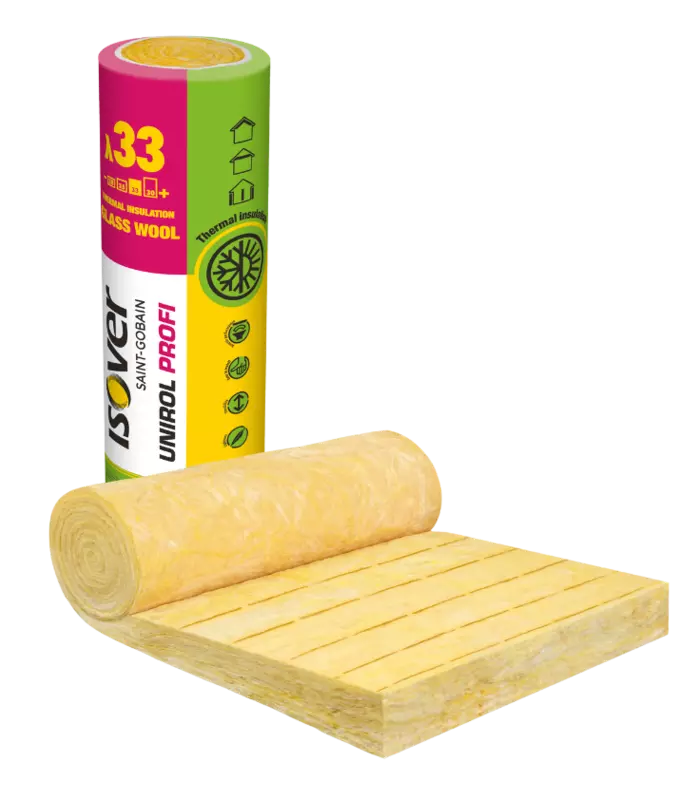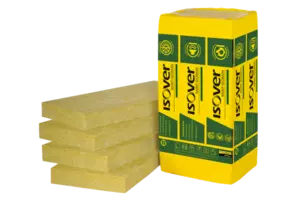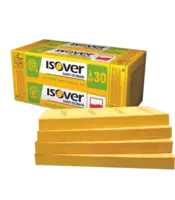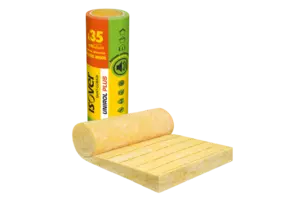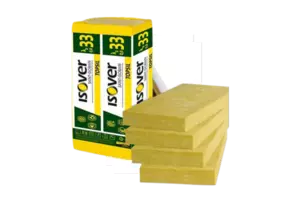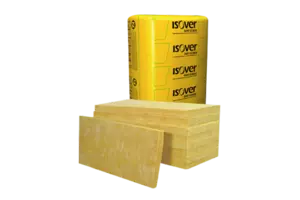Isover Unirol Profi
High-quality glass insulation suitable for application between rafters.
Supplied in complete pallets (1 pal = 24 rolls), free rolls can also be supplied for an additional fee.


High-quality glass insulation suitable for application between rafters.
Supplied in complete pallets (1 pal = 24 rolls), free rolls can also be supplied for an additional fee.
Product characteristics
Insulating rolled strips made of Isover glass felt have hydrophobized fibers all over the surface. The production is based on the method of pulping the glass melt and other additives and additives. The created mineral fibers are processed into the final shape of the belt within the production line. It is necessary to protect the insulation in the structure in a suitable way (vapour barrier film, suitable protection against dust settling in case of loose insulation, additional layers of double structures). The insulation is ecologically and hygienically safe and resistant to fungi, fungi and wood-destroying insects.
Usage
Glass insulation strips with excellent thermal insulation properties are intended as thermal and acoustic insulation of pitched roofs and ceilings.
Especially energy-saving type of insulation, λD = 0.033 W·m-1·K-1.
Packaging, transport, storage
Insulating rolled Isover Unirol Profi strips are compressed and packed in PE foil (1MPS = 24 rolls, volume 4.09 m3). The material is strongly compressed in the package and quickly acquires the nominal thickness after unpacking. Compression facilitates handling, saves storage space and space directly on the construction site. Rolls must be transported in covered means of transport under conditions that exclude their wetting or other deterioration. Products are stored in covered areas or in an external environment according to the conditions specified in current price list.
Key Facts
- flammability
- very good thermal insulation capabilities
- excellent acoustic properties in terms of sound absorption
- the surface of the product is equipped with special stripes for precise and fast cutting
- low diffusion resistance - easy permeability for water vapor
- ecological and hygienic safety
- water repellency - insulating materials are hydrophobized
- long life
- resistance against wood-destroying pests, rodents and insects
- easy machinability – products can be cut, drilled, etc.
- dimensional stability during temperature changes
Varianty produktu
| Thickness (mm) | Packaging (m2) | Palette (m2) | Transport packaging (m3) | Length x Width (mm) | Thermal resistance RD (m2·K·W-1) |
|---|---|---|---|---|---|
| Thickness (mm)50 | Packaging (m2)11,4 | Palette (m2)273,6 | Transport packaging (m3)0,19 | Length x Width (mm)9 500 × 1 200 | Thermal resistance RD (m2·K·W-1)1,50 |
| Thickness (mm)60 | Packaging (m2)9,6 | Palette (m2)230,4 | Transport packaging (m3)0,19 | Length x Width (mm)8 000 × 1 200 | Thermal resistance RD (m2·K·W-1)1,80 |
| Thickness (mm)80 | Packaging (m2)7,2 | Palette (m2)172,8 | Transport packaging (m3)0,19 | Length x Width (mm)6 000 × 1 200 | Thermal resistance RD (m2·K·W-1)2,40 |
| Thickness (mm)100 | Packaging (m2)5,4 | Palette (m2)129,6 | Transport packaging (m3)0,19 | Length x Width (mm)4 500 × 1 200 | Thermal resistance RD (m2·K·W-1)3,00 |
| Thickness (mm)120 | Packaging (m2)4,8 | Palette (m2)115,2 | Transport packaging (m3)0,19 | Length x Width (mm)4 000 × 1 200 | Thermal resistance RD (m2·K·W-1)3,60 |
| Thickness (mm)140 | Packaging (m2)3,96 | Palette (m2)95,04 | Transport packaging (m3)0,19 | Length x Width (mm)3 300 × 1 200 | Thermal resistance RD (m2·K·W-1)4,20 |
| Thickness (mm)160 | Packaging (m2)3,48 | Palette (m2)83,52 | Transport packaging (m3)0,19 | Length x Width (mm)2 900 × 1 200 | Thermal resistance RD (m2·K·W-1)4,80 |
| Thickness (mm)180 | Packaging (m2)3,12 | Palette (m2)74,88 | Transport packaging (m3)0,19 | Length x Width (mm)2 600 × 1 200 | Thermal resistance RD (m2·K·W-1)5,45 |
| Thickness (mm)200 | Packaging (m2)2,88 | Palette (m2)69,12 | Transport packaging (m3)0,19 | Length x Width (mm)2 400 × 1 200 | Thermal resistance RD (m2·K·W-1)6,05 |
| Thickness (mm)220 | Packaging (m2)2,76 | Palette (m2)66,240 | Transport packaging (m3)0,19 | Length x Width (mm)2 300 × 1 200 | Thermal resistance RD (m2·K·W-1)6,65 |
Dokumenty

